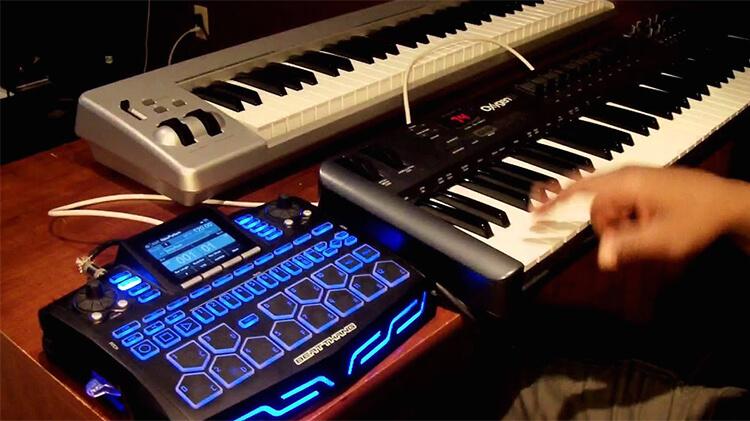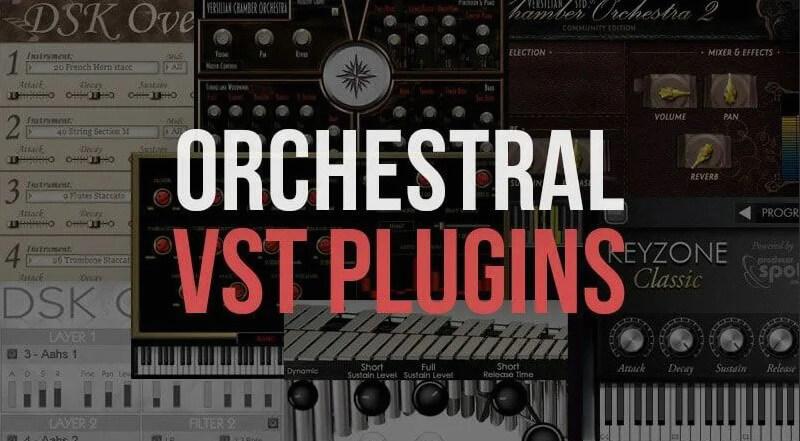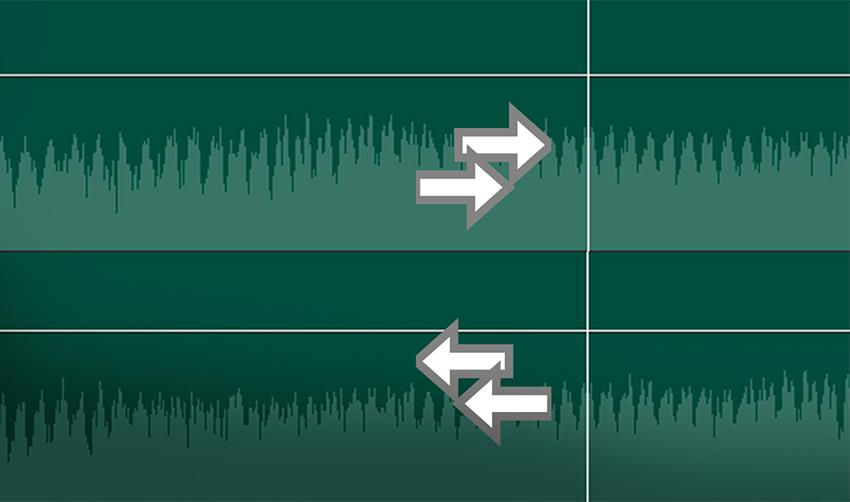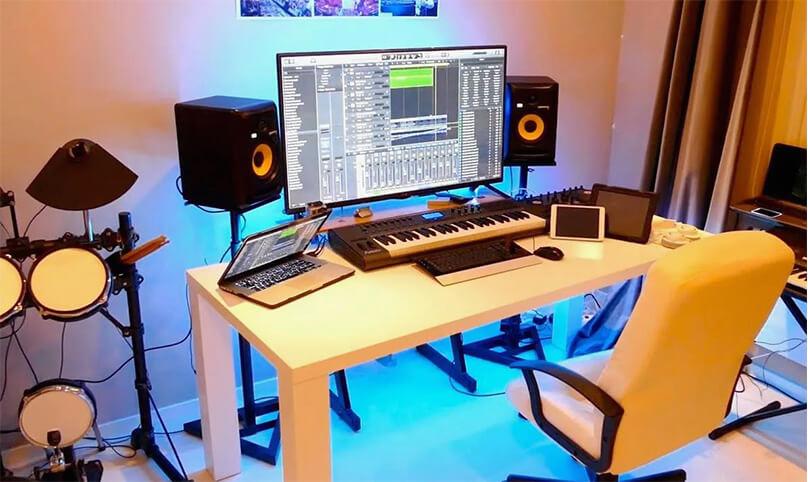The best microphones
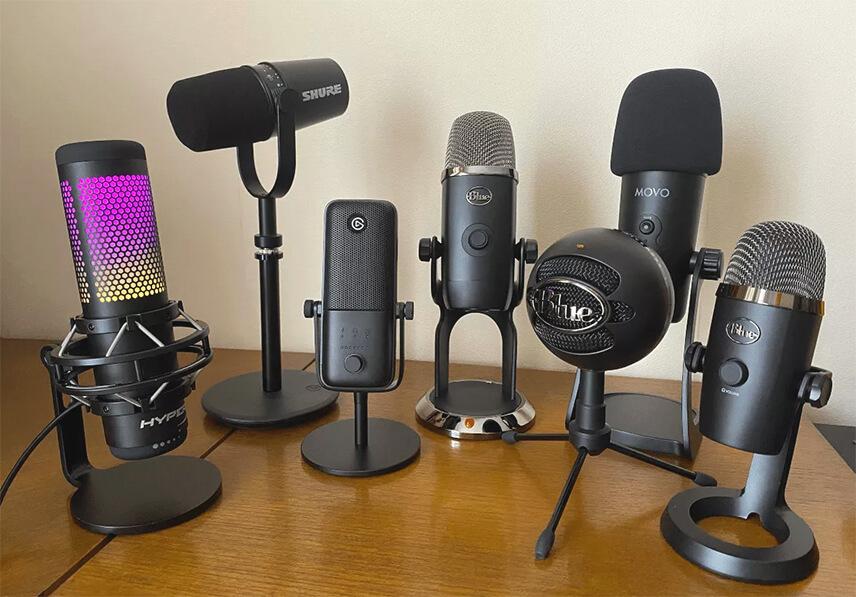
If you’re looking for the best microphones for your needs, then you’ve come to the right place. In this guide, we’ll take a look at some of the best models for sound recording and voice quality, across several different applications. Whether you’re looking for a microphone for calls to colleagues, adding voice overs to videos or live streaming events, we’ve got you covered. So let’s get started!
When it comes to choosing the right mic for your needs, there’s a lot of options to consider. But don’t worry, we’ve tested all the best models so you can be sure you’re getting the perfect one for your application.
If you just need a plug-and-play microphone for video chats and working from home, we’d recommend a simple USB microphone. But being simple doesn’t mean features have been sacrificed for easy desktop setup. In fact, many of these models offer extra functionality that makes them ideal for recording podcasts or streaming.
So whether you need a basic mic for video calls or something more robust for recording and streaming, one of the models below is sure to be the perfect fit.
To find the best microphone for your needs, read our roundup of the best microphones you can buy right now. We have a variety of microphones that will meet your needs, whether you are a gamer, streamer, or home worker.
What are the best microphones?
The Blue Yeti is a great microphone for a variety of purposes, from podcasts to gaming. It has a range of directional patterns that let you record in different directions, and it also provides great recording quality. Additionally, it’s priced affordably, making it a great option for those on a budget.
The JLab Talk is a great option for podcasters who are looking for an affordable and high-quality microphone. It has the same set of recording modes as some of the more expensive mics, and it also has competitive performance. Additionally, the JLab Talk is one of the more affordable options on the market, making it a great choice for budget-conscious podcasters. Another great option for podcasters is the Rode PodMic, which offers excellent performance and is very affordable. However, keep in mind that the Rode PodMic uses an XLR connection instead of USB.
Best microphones for recording: our top pics
The microphones we’ve selected for this guide all have their own strengths, whether it’s accurately capturing the unique tonality of a vintage acoustic guitar or grand piano, embellishing the sound of a great vocal performance, or providing that velvet-smooth broadcast voice track. However, there is no one ‘best in class’ mic, as everyone’s requirements will be different.
That said, some mics performed better than others. The Aston Microphones Origin continues to impress with its depth of sound and quality construction. The AKG C636 was also impressive, with its clear and accurate sound. However, the best microphone for your specific needs may be different, so be sure to invest in something decent as soon as you can. You’ll reap the benefits of a higher quality recording microphone for years to come.
The 3 Different Types of Microphones
- Dynamic microphones are typically the most affordable type of microphone and they’re also the most durable. They’re popular for live performances because they can handle high sound pressure levels without distorting. However, dynamic microphones can be a bit limited in terms of their frequency response;
- Condenser microphones are the most popular type of microphone for studio recording. They have a wider frequency response than dynamic microphones, which means they can capture a wider range of sound. They’re also more sensitive to acoustic sounds, which makes them ideal for recording vocals and acoustic instruments;
- Ribbon microphones are often considered to be the most natural-sounding type of microphone. They’re very sensitive to acoustic sounds and have a wide frequency response. However, ribbon microphones are also the least durable type of microphone and they’re also the most expensive.
The best microphones you can buy today
1. Blue Yeti
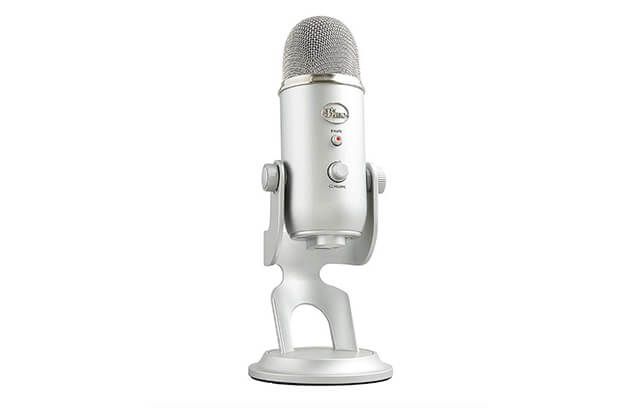
Mic Type: Condenser
Audio Patterns: Bidirectional, Cardioid, Omnidirectional, Stereo
Size: 11.6 x 4.9 x 4.7 inches
Connection Type: USB
The Blue Yeti X is a great-sounding microphone, and it’s a hybrid model of the Nano and the original Yeti. This makes it a great choice for anyone looking for a reliable microphone. It features the best bits of both models, making it a great option for any situation.
The Smart Knob on the front of the microphone now allows you to control your volume levels more easily. You can see at a glance what your volume levels are, and the sound quality remains top-notch. This also allows you to adjust the gain, headphone levels, and blend modes while on the go. This means you can control how loud you are in your headphones, how loud you sound to others, and the volume of your headphones all from the front of the unit. This is a great feature for those who want more control over their audio experience.
The Yeti X has four different pickup patterns that you can switch through using the single button on the back of the mic. The cardioid pattern is great for recording and streaming, the omni-directional pattern is great for large group calls, the bi-directional pattern is perfect for podcasts with two people, and the stereo pattern is perfect for creating ASMR content.
The Blue Yeti microphone is known for its superior quality, making it a popular choice for professional podcasters and streamers. Its crisp, clear sound with a wide range makes it ideal for capturing your voice accurately. Whether you’re podcasting or streaming, the Blue Yeti is sure to give you the best sound quality possible.
The downside to this mic is its size, but the included stand does a great job of keeping it stable on a desk. It also does a good job of keeping vibrations from shooting through it and into the microphone, causing annoying feedback. Your best bet to reduce this further will be a boom arm with some form of suspension, however.
The downside to this mic is its size, but the included stand does a great job of keeping it stable on a desk. It also does a good job of keeping vibrations from shooting through it and into the microphone, causing annoying feedback. Your best bet to reduce this further will be a boom arm with some form of suspension, however.
2. JLab Talk

Mic Type: Condenser
Audio Patterns: Bidirectional, Cardioid, Omnidirectional, Stereo
Size: 9.9 x 7.6 x 7.6 inches (with tripod extended)
Connection Type: USB
The JLab Talk is a great USB mic for anyone looking for an affordable option. It has great recording quality and features, making it a great choice for anyone looking to start podcasting or recording music. The Talk also has four distinct recording patterns, which makes it a great choice for a variety of purposes. The bidirectional mode is a great choice for recording interviews, while the omnidirectional mode is great for podcasting or recording music. The cardioid and stereo modes are both great for recording live events or concerts. Overall, the JLab Talk is a great choice for anyone looking for a USB mic that won’t break the bank.
3. Rode PodMic
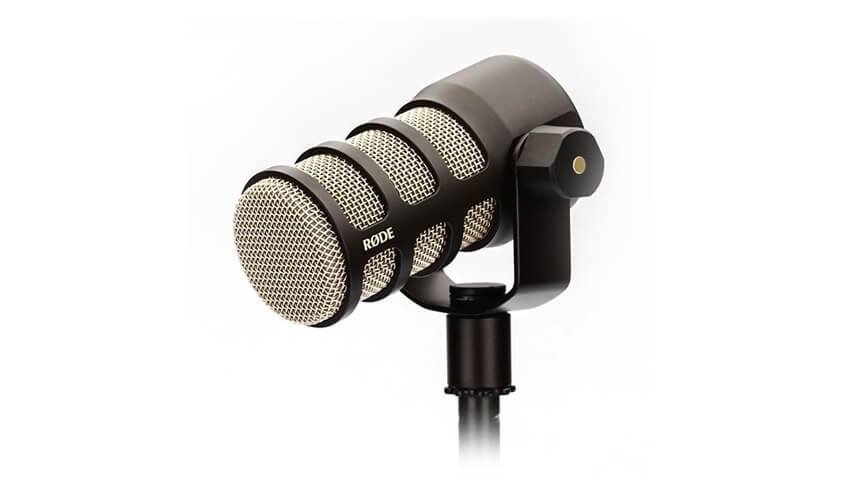
Mic Type: Condenser
Audio Patterns: Cardioid
Size: 6.8 x 4.3 x 2.4 inches
Connection Type: 3-pin XLR
The Rode PodMic is one of the best podcasting microphones on the market and boasts studio-quality sound, thanks to its use of an XLR connector. However, it’s not overly complicated to use, making it a great option for those who want quality audio without having to spend too much time tweaking settings. In fact, one of our favorite things about the PodMic is that you don’t need to spend much time adjusting your settings to get great sound.
The PodMic is a great choice for anyone looking for an affordable, yet high-quality, USB microphone. Its internal pop filter helps keep recordings controlled, and the sturdy build helps shrug off unwanted noises should you accidentally knock the table or need to quickly adjust positioning. Additionally, it’s a great choice for beginners because it doesn’t include a stand – making it more affordable. So, if you’re looking for a great entry-level USB microphone, the PodMic is a great choice.
4. HyperX SoloCast
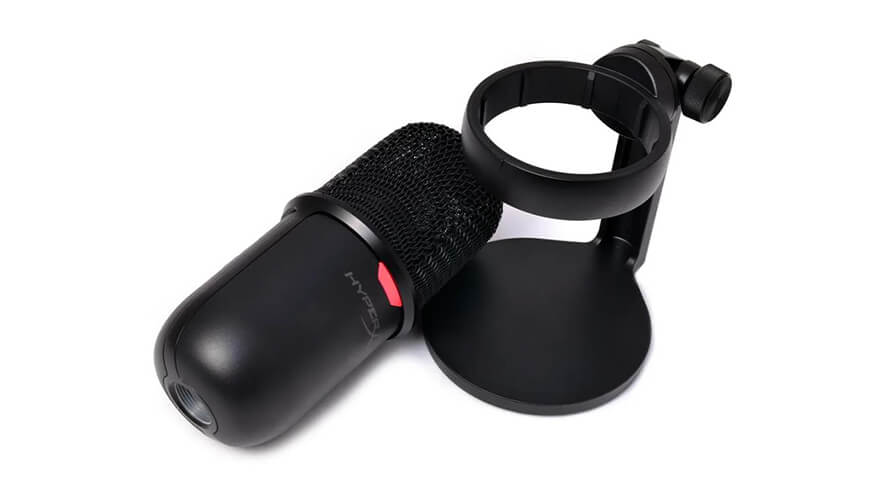
Mic Type: Condenser
Audio Patterns: Cardioid
Size: 6.9 x 3.1 x 3.1inches
Connection Type: USB-C to USB
The HyperX SoloCast is an excellent budget-friendly microphone that delivers the same high quality audio as more expensive models. It is portable and easy to use, making it a great choice for anyone looking for an affordable microphone that still sounds great. In terms of sound quality, you really can’t beat the price. The SoloCast offers excellent value for the money and is sure to please anyone looking for an affordable microphone that doesn’t sacrifice quality.
The SoloCast is designed with a “sound over anything else” approach, much like the wildly successful HyperX Cloud gaming headsets. HyperX has stripped down one of its QuadCast mics down to the bare essentials, and I was impressed with its sound quality and the number of smart quality-of-life features on the microphone. These features set the SoloCast apart from other mics on the market.
The HyperX SoloCast and QuadCast S offer very similar sound quality, with a 20Hz-20kHz frequency response and a 16-bit sample rate. The SoloCast has a single cardioid polar pattern, while the QuadCast offers four different patterns. This makes the QuadCast more versatile in certain situations, but the SoloCast still sounds great overall.
Although it lacks some features that more expensive headsets have, the HyperX SoloCast is still a great choice for those looking for an affordable gaming headset. It’s missing a headphone jack, gain control, shock mount, internal pop filter, and RGB lighting, but at its low price point, these are sacrifices you can live with.
The SoloCast lacks a physical gain control, so any changes you need to make to the mic’s volume have to be done on the software level in your streaming apps. This can be a bit of a pain, especially if the mic is sounding a bit too hot out of the box.
The SoloCast is a great mic if you’re looking for high-quality audio without having to worry about gain settings. It’s easy to use and delivers great sound quality, making it perfect for anyone who wants to start podcasting or recording vocals.
5. Sterling SP150SMK

Mic Type: Condenser
Audio Patterns: Cardioid
Size: 7.1 x 1.9 x 1.9 inches
Connection Type: XLR
The Sterling SP150SMK is a great beginner mic for aspiring podcasters. It’s beautifully constructed, with a nice look and feel, and it comes with all the accessories you need to take your show on the road. The sound quality is top notch, picking up vocals with precision so you won’t have to do much post-production tweaking. At $79, it’s a great value for the quality you get.
The SP150SMK has a tendency of picking up extraneous noises, such as an elbow rubbing against some fabric, if it is not used with high-pass filters. High-pass filters help to prevent these noises from being picked up by the microphone, which can result in a cleaner sound.
6. Sennheiser MKE 400

Mic Type: Condenser
Audio Patterns: Supercardioid
Size: 5 x 2.6 x 1.5 inches
Connection Type: 3.5mm
Videographers of all levels should check out the Sennheiser MKE 400 shotgun mic. This mic is great for capturing clear speech, even in noisy environments. It uses a supercardioid recording pattern to isolate the target sound source, making it perfect for interviews, weddings, and more.
The MKE 400 is a great microphone for content creation, especially if you’re doing it yourself. It’s easy to use, with a plug-and-play design that works with both DSLR and smartphone cameras. So whether you’re just starting out or you’re a seasoned pro, the MKE 400 is a great tool for creating great-sounding videos and audio clips.
7. Blue Yeti Nano
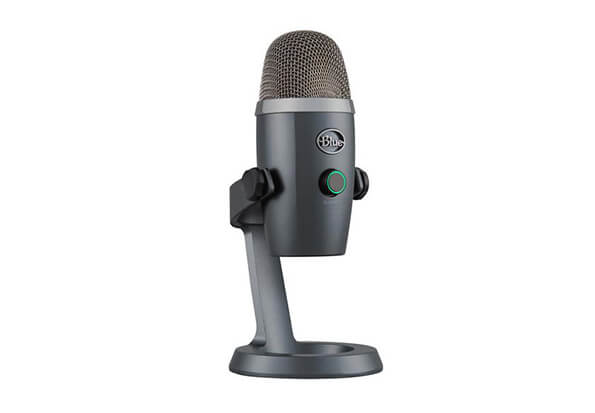
Mic Type: Condenser
Audio Patterns: Cardioid, Omnidirectional
Size: 8.3 x 3.8 x 4.3 inches
Connection Type: USB
The Blue Yeti Nano is a high quality USB microphone that is more compact and slightly stripped down than the flagship Blue Yeti. It is a great value at its price point.
Looking for a quality USB mic on a tight budget? Check out the JLab Talk. It offers similar recording quality in its cardioid and omnidirectional patterns, plus a mature look and a tough metal build. For only $99, it’s an amazing bargain, especially as it has a stereo mode. But the smaller Blue Yeti Nano still deserves a place on this list.
8. Movo UM700
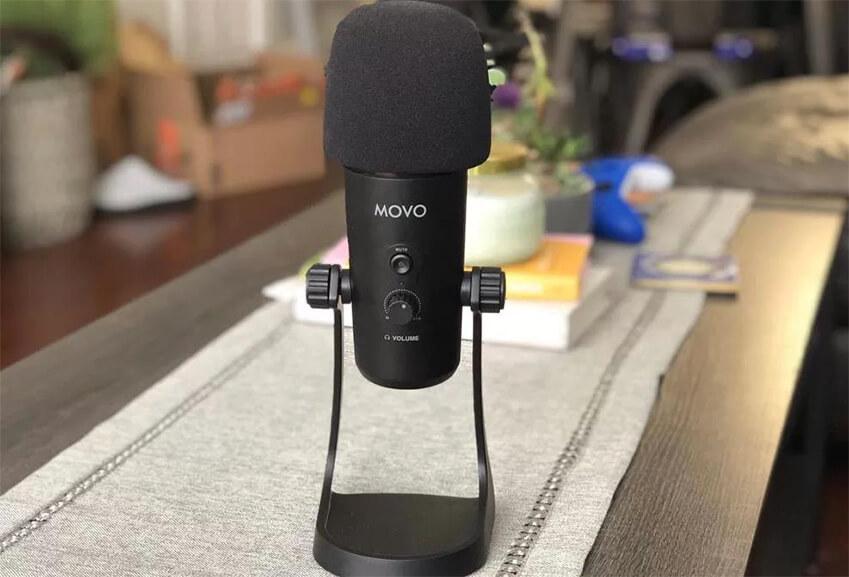
Mic Type: Condenser
Audio Patterns: Bidirectional, Cardioid, Omnidirectional, Stereo
Size: 11.6 x 4.4 x 3.8 inches
Connection Type: USB
The Movo UM700 is a great alternative to the Blue Yeti if you’re looking for a more affordable option. It has great sound quality and is very easy to use, making it a great choice for anyone looking for an affordable mic that still delivers high quality sound.
UM700’s it’s more than up to the task for gaming, meetings and casual chats. Simply connect the USB cable, up the gain a little, and the UM700 is good to go. The UM700 has a wide dynamic range and crisp, clear sound making it perfect for any audio recording application. Whether you are a professional podcaster or just need to record a meeting, the UM700 is sure to meet your needs.
9. HyperX QuadCast S
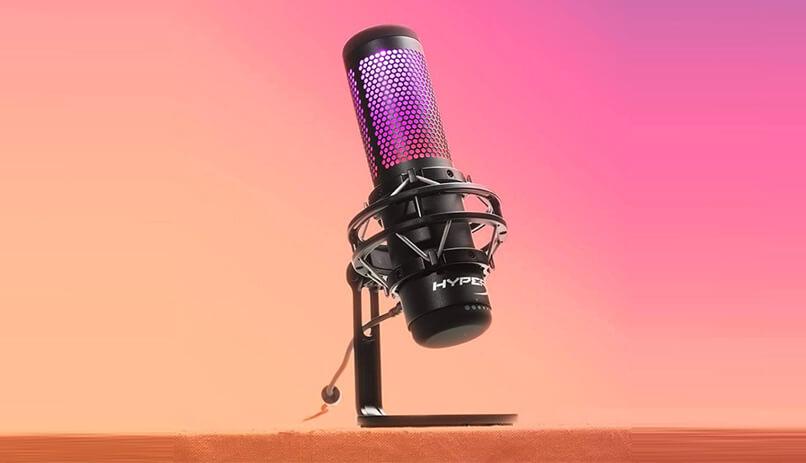
Mic Type: Condenser
Audio Patterns: Bidirectional, Cardioid, Omnidirectional, Stereo
Size: Bidirectional, Cardioid, Omnidirectional, Stereo
Connection Type: USB
If you’re looking for a gaming microphone that will match your flashy RGB PC, the HyperX QuadCast S is a great option. It features all of the same great features as the standard QuadCast, but with added RGB lighting that will make your setup look even better. Plus, it’s still affordable enough that you won’t break the bank.
The Blue Yeti is one of the best microphones on the market for a variety of reasons. It has customizable lighting, which makes it a great choice for recording videos or streaming. In addition, the detail-rich recording quality is safeguarded by a built-in pop filter and shock mount, and it can easily be attached to your own stand if you’d prefer. The Audio-Technica AT2020USB+ is a versatile USB microphone that provides four distinct recording modes, so you can tailor the settings for solo or group recording. It’s perfect for podcasting, voiceovers, and home studio recording.
10. Rode NT-USB Mini

Mic Type: Condenser
Audio Patterns: Cardioid
Size: 5.6 x 2.2 x 3.5 inches
Connection Type: USB
The Rode NT-USB Mini is a great option for anyone looking for an affordable microphone. It records audio with decent quality, and it also has a built-in headphone jack so you can listen to your recordings as you make them. Additionally, the USB-C port makes it easy to connect to a laptop or desktop computer. The mic also has a professional look and feel, thanks to its plastic and metal construction. Overall, the Rode NT-USB Mini is a great choice for anyone on a budget.
If you’re a newbie podcaster or streamer, the Rode NT-USB can still be a serviceable product, despite its gain issue. However, adjusting the gain inside software won’t do much to help. Luckily, there are a few things you can do to make up for this. For starters, try positioning the microphone closer to your mouth. You could also try using a pop filter to minimize background noise and popping sounds. Finally, make sure you’re speaking into the microphone directly, and not at an angle. By following these tips, you should be able to produce high-quality audio with the NT-USB.
11. Sontronics Solo microphone

Type: Dynamic
Audio pattern: Cardioid
Application: Vocals, instruments
Connection: XLR
Powered: No
The Solo microphone is a well-weighted and solid microphone that is perfect for handheld use. Some light hand-held mics can be quite sucky, but the Solo is not one of them. In addition, its grille has a flat front which we much preferred to the usual bulbous type. This design feature not only provides a more consistent distance guide when up close, but it also reduces the risk of knocking your front teeth out in a rowdy club gig.
The higher output impedance of the mic is a good thing for controlling noise and feedback in live events and in the studio. The beefy output is useless if the sound doesn’t pull its weight, but in this case, it does.
12. IK Multimedia iRig Mic Studio

Mic Type: Condenser
Audio Patterns: Cardioid
Size: Speech
Connection Type: Micro USB
The IK Multimedia iRig Mic Studio is one of the best budget USB microphones on the market. It’s simple to set up and has decent sound quality. Plus, it comes with a suite of apps for recording and production, making it a great choice for anyone who needs a great mic on a budget.
The iRig Mic Studio is a great choice for anyone looking to get into recording on a budget. It’s equally at home on a portable device or laptop, and the price-to-performance balance makes this a very attractive option. The included software makes it easy to get started, and the sound quality is excellent for a budget microphone. If you’re looking for an affordable option for recording, the iRig Mic Studio is a great choice.
13. Rode NT1 microphone

Type: Condenser
Audio pattern: Cardioid
Application: Vocals, instruments
Connection: XLR
Powered: No
The Rode NT1 has been completely redesigned from the ground up, with only the mesh grille being shared with the NT1A. The new model is called the NT1, and it offers improved sound quality and performance compared to its predecessor. Rode has also included a number of new features in the NT1, such as an improved capsule and circuit design, that make it one of the best sounding microphones on the market today. If you’re looking for a high-quality microphone that can provide excellent results, the Rode NT1 is a great option to consider.
The new HF6 capsule in the NT1 microphone gives it a sound signature similar to vintage favourites, but with extremely low noise. The transducer is suspended inside the microphone using Rycote’s Lyre system, which minimises external vibrations. Rode also claims that the NT1 is the world’s quietest 1-inch cardioid condenser mic due to the high-grade electronics keeping the self-noise level down to 4.5dBA. This makes it an ideal choice for recording voice or instruments.
14. Audio Technica AE2300 microphone

Type: Dynamic
Audio pattern: Cardioid
Application: Instruments
Connection: XLR
Powered: No
The new HF6 capsule in the NT1 microphone gives it a sound signature similar to vintage favourites, but with extremely low noise. The transducer is suspended inside the microphone using Rycote’s Lyre system, which minimises external vibrations. The NT1 is the world’s quietest 1-inch cardioid condenser mic due to its high-grade electronics which keep the self-noise level down to 4.5dBA. This makes it an ideal choice for recording delicate acoustic instruments or for use in very quiet environments.
The weighty brass casing and top grille feel very robust, and the screw-tight rubberised clip should keep any wandering drumsticks in place while providing some mechanical isolation. This is great news for anyone looking for a durable and reliable set of drums.
The Blue Yeti microphone is a great choice for anyone looking for a high-quality microphone. It has a beautiful design and is manufactured well. The double-dome diaphragm improves high-frequency and transient response, and the off-axis frequency response is also reasonably linear up to 120 degrees. This could be beneficial when setting up a multi-miked drum kit. Overall, it’s a great mic and would be a great addition to any studio or home recording setup.
15. Shure MV7
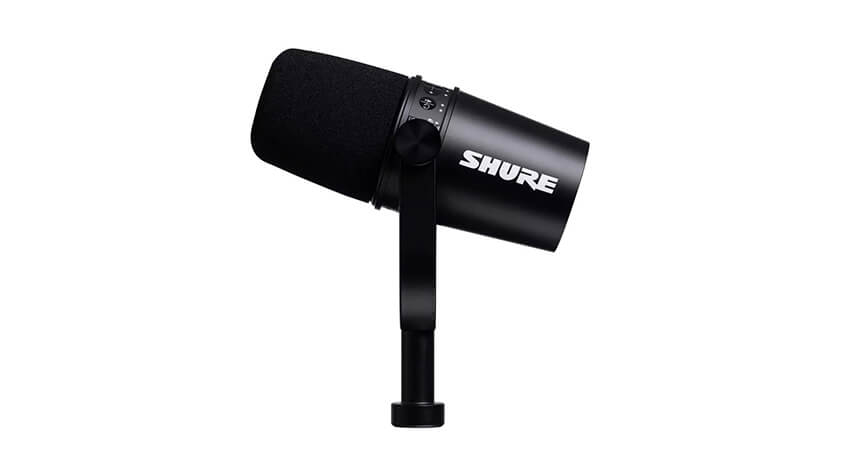
Mic Type: Dynamic
Pickup pattern: Cardioid
Application: Speech
Connection Type: USB and XLR
Shure has a long history of manufacturing quality microphones for musicians and other audio professionals. However, their MV7 microphone is also a great option for those looking to record crisp speech on a budget. The MV7 is able to capture clear sound without breaking the bank, making it a great value for anyone looking to get started in speech recording.
The MV7 is the perfect microphone for vocal recordings, with a few neat tricks to make the experience as simple and rewarding as possible. The MOTIV app is a great complement to the MV7, providing specific vocal presets to give your recordings a professional sheen.
The MV7 is a highly capable microphone for speech applications. It’s not as well suited for use by musicians or singers, but it can handle those applications if need be. This microphone is specifically designed for speeches, and it excels at that task.
16. Aston Microphones Origin

Mic Type: Condenser
Pickup pattern: Cardioid
Application: Vocals
Connection Type: XLR
The Aston Origin is a fixed pattern (cardioid) condenser microphone that is unique in its price range. It is the smaller of Aston’s two microphones, the larger being the Spirit, which is a multi-pattern condenser with an extra 10dB of pad available. There are two switches on the stainless steel casing: 10dB pad and 80Hz low-cut filter.
The Aston Origin is a great choice for those looking for a unique, high-quality condenser microphone that won’t break the bank. Its fixed pattern and smaller size make it ideal for cardioid applications, while the 10dB pad and 80Hz low-cut filter on the stainless steel give you flexibility in how you use it.
The Aston Origin is a great sounding microphone that offers a clean and pure reproduction of sound. It may not be the most characterful mic out there, but that’s what we liked about it during our testing. If you’re looking for a solid, reliable microphone that will give you faithful recordings, then the Origin is a great option. It has an XLR connection and a mic stand mounting socket (5/8-inch with a 3/8-inch adaptor included) on the underside, which means you don’t need a mic clip. However, this does limit the angle choices to what the stand can do. Behind it sits a stainless steel wire mesh shielding. The wave-shaped outer spring/mesh acts as a shock absorber for the capsule, which is suspended inside.
17. AKG C214
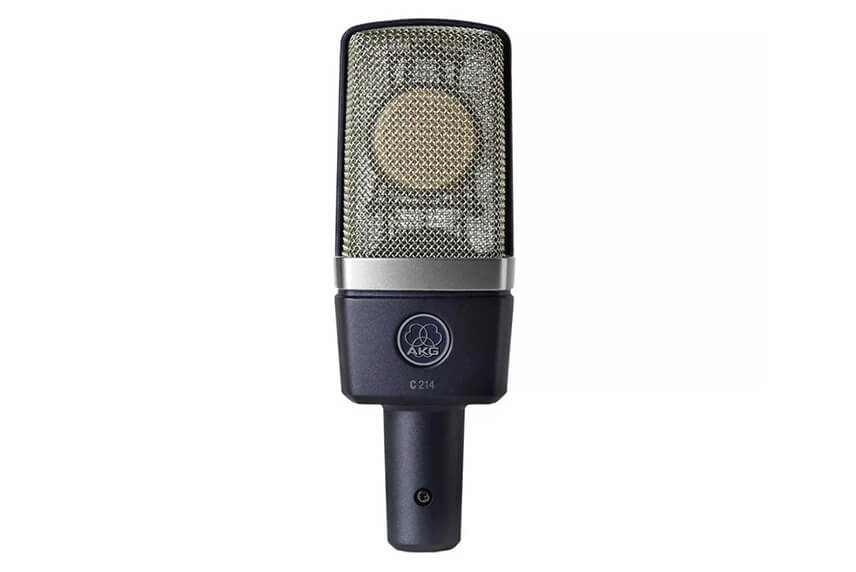
Type: Large diaphragm condenser
Audio pattern: Cardioid
Application: Amps, acoustic
Connection: XLR
Powered: No
The AKG C214 is a versatile large diaphragm condenser mic that is perfect for a variety of applications. Whether you are recording guitar amps, acoustic instruments, pianos or vocals, the C214 will deliver great results. With its high sensitivity and wide frequency range, this mic can handle any sound source with ease.
The C214 delivers a broad frequency range, making it great for capturing high and low frequencies. This means that the common issue of muddy, low-end sound is a thing of the past. Additionally, the C214’s higher frequencies can be accentuated, providing a more clear and accurate sound.
The C214 delivers a broad frequency range, making it great for capturing high and low frequencies. This means that the common issue of muddy, low-end sound is a thing of the past. Additionally, the C214’s higher frequencies can be accentuated, providing a more clear and accurate sound.
18. AKG C636
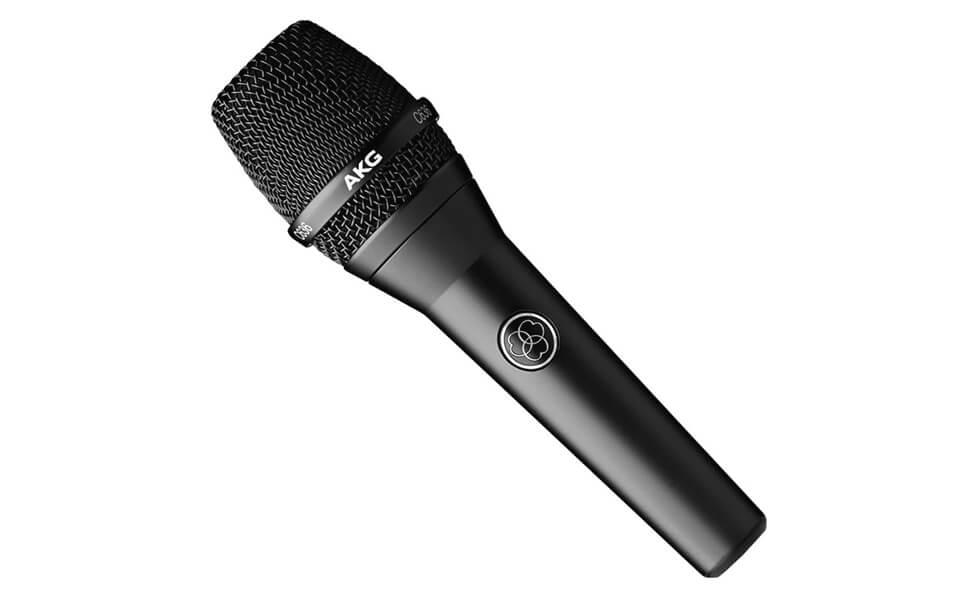
Mic Type: Condenser
Pickup pattern: Cardioid
Application: Vocals
Connection Type: XLR
The C636 is a complex condenser mic that has to balance issues with feedback rejection and handling noise against tradeoffs in sound quality. Its complexity comes at a cost in both R&D and production. However, its sound quality is unmatched by any dynamic mic.
The C636 is a great microphone for those who are looking for great sound quality. The sound is clear and full, and the high frequency range is well defined. This makes the C636 a great choice for those who need a microphone that can capture both the low and high frequencies accurately. Additionally, the black exterior and lightness in hand make this mic easy to use and transport.
19. Neumann TLM 102 microphone
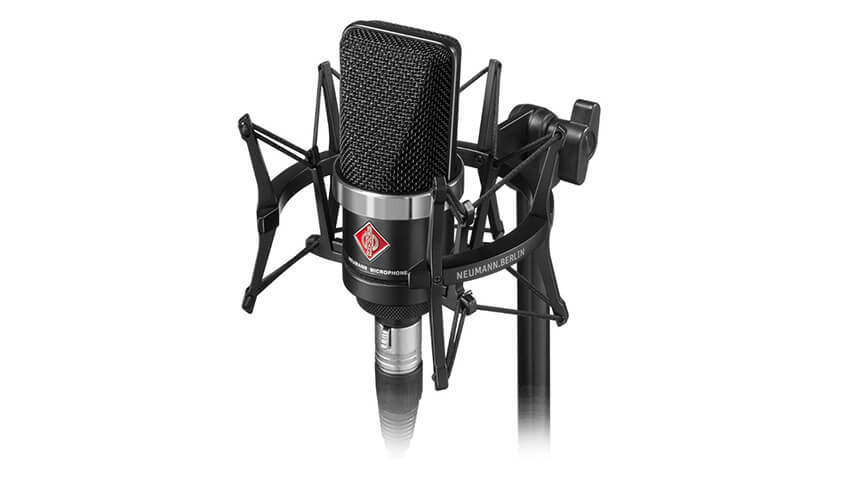
Mic Type: Condenser
Pickup pattern: Cardioid
Application: Vocals
Connection Type: XLR
The Neumann TLM 102 is one of the most highly respected names in recording microphones. This large diaphragm condenser microphone is perfect for capturing vocals, and it does not disappoint. Its superb performance is sure to impress any musician or audio engineer.
The TLM 102 is a great microphone for a variety of applications. It has a crystal clear frequency range, with a nice bump around the 6 kHz mark. This makes it perfect for recording vocals and other instruments. It also has a high sound pressure threshold, making it ideal for recording loud sources like drums and guitar amplifiers. Overall, the TLM 102 is a great investment for anyone looking to improve their recording gear.
20. Rode NTR Ribbon Microphone

Type: Ribbon
Pickup pattern: Figure-8
Application: Vocals, instruments
Connection: XLR
Powered: No
The NTR is a great-sounding ribbon microphone that is perfect for capturing natural sound. It is electronically active, running from 48V phantom power, and has a built-in transformer that offers a high output so that the mic is not so finickity about preamp requirements. This makes it versatile enough to use with a wide range of preamps without having to turn the gain up to noise-generating levels. Internal shock mounting results in there being no need for an external suspension cradle, which helps with placement. Even though this is quite a heavy mic, the included compact mount which attaches to its base works great at holding it at any angle on a mic stand. On a variety of sound sources we found the mic to deliver a very natural representation of whatever was put in front of it with plenty of low-end and a clear top. It’s perfect for capturing sound without adding any unwanted coloration.
21. Lewitt LCT 640 TS microphone

Mic Type: Condenser
Pickup pattern: Omni, wide cardioid, cardioid, supercardioid and figure-8
Application: Vocals
Connection Type: XLR, mini XLR
The Lewitt LCT 640 TS is a new twin diaphragm microphone that sports a number of features and improvements over the company’s other LCT 640 model. The TS designation stands for Twin System, and means that the microphone can be used in either regular multipattern mode, or in dual mode. This allows the user to adjust the pickup pattern after recording, opening up some stereo recording options. Additionally, the second diaphragm output is accessed via a miniature three-pin connector on the side of the body. The microphone also comes with a number of accessories, including a foam windshield, suspension cradle, mic pouch, and magnetic pop shield. Overall, it’s a well-made and stylish package.
22. Slate Digital VMS

Type: Condenser
Pickup pattern: Cardioid
Application: Vocals, instruments
Connection: XLR
Powered: No
The Slate Digital Virtual Microphone System (VMS) is a high-quality, large capsule condenser microphone system that allows you to emulate the character of other microphones. This system includes a dedicated “ultra linear” mic preamp and a plug-in that contains the modeled microphones. The only variable is that you have to use your own A/D converter to get it into your DAW.
One of the great things about the VMS is that it removes as many of the variables as possible, making it an excellent choice for those who want to emulate the character of other microphones. With an original Neumann U47 commanding up to $10,000, the VMS is a more affordable option for those who want to add some of the classic large capsule condenser microphones to their studio setup.
23. Sontronics Aria microphone

Type: Condenser
Pickup pattern: Cardioid
Application: Vocals, instruments
Connection: XLR
Powered: 12AX7/ECC83 tube
The Aria sounds very natural, with a slight presence lift in the upper mids rather than in the sibilant territory. There is no high frequency hyping, or the brittleness that plagues other mics of that ilk. The lows and low mids feel solid, and there is only a small proximity effect. This makes the Aria an excellent choice for recording vocals.
The cardioid polar pattern on the Aria mic is fairly broad, making the sweet spot large. This is great for both vocals and acoustic guitars. As a vocal mic, the Aria delivers a faithful sound that is also responsive when you deliver a more forceful performance. With acoustic guitar, the mic captures a non-boomy sound that also doesn’t have an excessive level of hype. This makes it great for capturing complex sounds such as guitar amp, strings, and percussion.
24. Audio Technica AT5040 microphone
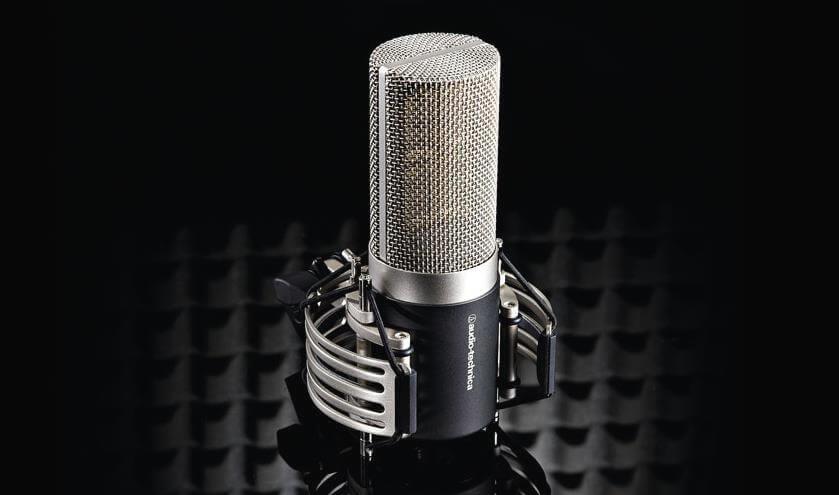
Type: Condenser
Pickup pattern: Cardioid
Application: Vocals, instruments
Connection: XLR
Powered: No
The AT5040 is a high end phantom powered condenser mic that features a discrete component design, low noise and high SPL handling. It also comes with a quick release cradle that is beautifully designed. The noise figure is exceptional and makes this mic ideal for recording in noisy environments.
The really big deal with the advanced internal capsule decoupling mechanism is not just the whopping price tag, but also the fact that it is hand built and inspected. This ensures that the quality of the product is of the highest standard. In addition, the capsule itself is a four-part rectangular design, which delivers over ten square cms of surface area. This is significantly more than a one inch capsule, making it a much better choice for your needs. With all of these features, it is easy to see why this product is so popular.
25. Elgato Wave 3
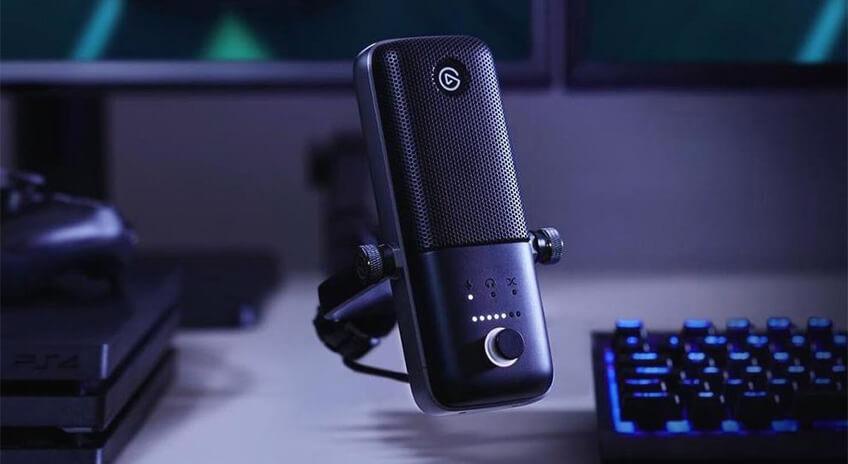
Polar patterns: Cardioid
Connectivity: USB
Recording sample rate: 24-bit 96kHz
Frequency response: 70–20,000Hz
Features: Capacitive Mute, Volume control, Gain Control
The Elgato Wave 3 microphone is a great choice for streamers who are looking to improve the quality of their audio streams without having to fuss with too many settings. This 96 kHz microphone sounds incredible and is easy to use, making it a great option for anyone who wants to get started streaming. The Wave 3’s design is both modern and timeless, and its capacitive mute button is a nice touch. Additionally, the included boom arm adapter means that you don’t have to worry about ordering any special shock mounts or attachments. Overall, the Elgato Wave 3 is a great microphone for anyone who wants to take their streaming setup to the next level.
The Elgato Wave: 3 is a digital audio mixer that is designed to control all aspects of your stream from one place. With 8 channels available for game audio, multiple microphones, and even game chat, the Wave: 3 is perfect for any streamer. Additionally, the Clipguard technology automatically adjusts your levels, so you don’t have to worry about your microphone blowing out in real-time. Whether you’re streaming for hours on end or just doing a quick game play session, the Wave: 3 is perfect for any streaming setup.
The Wave: 3 sounds great, even with the gain set on the lower end. With its single cardioid polar pattern, it might not be the most versatile microphone out there, but it’s a decent option if you’re looking for an easy-to-use mic for your next stream.
26. Razer Seiren Mini
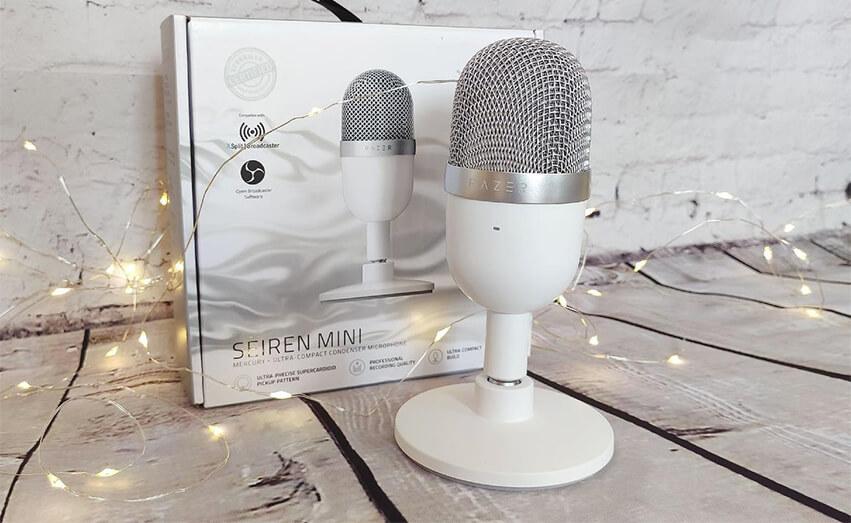
Polar patterns: Super-Cardioid
Recording Sample Rate: 16-bit 48kHz
Connectivity: USB
Frequency response: 20–20,000Hz
Features: Tap-to-mute sensor
The Razer Seiren Mini is a great choice for those looking for an affordable, high-quality microphone. Its simple design and variety of colors make it stand out from the crowd, while its sound quality rivals that of more expensive options. While it lacks some features, like a volume or gain dial, the Seiren Mini is still a great value for the price.
The Seiren Mini is a great budget-friendly microphone that comes in a variety of colors, including Black, Mercury White, and Quartz. Its pill-shaped design is not only eye-catching but also very practical, as it makes the microphone easy to hold and use. Razer has been slowly adopting some design cues from Apple, especially when it comes to its gaming laptops. The Seiren Mini is a great example of this trend, as its design is very sleek and modern.
The Seiren Mini sounds just as good as Razer’s more expensive Seiren offerings. The Mini’s super-cardioid polar pattern does a better job of tapering down background noise to focus on what’s in front of it, making it a great option for streamers and gamers alike. However, it does sound a bit softer than the Seiren Emote at its default gain. I’ve also added in the SoloCast and JLab Talk GO for comparison. The bottom line is that the Seiren Mini is a great option for those looking for a high-quality, affordable microphone.
The Seiren Mini is a great entry-level microphone for those just starting out in podcasting or streaming. Its small size and low price make it a great option for people on a budget, and it offers good sound quality for the price. However, there are a few things that could be improved. First, the lack of a mute button can be a bit annoying. Second, the micro-USB connection is proprietary and not as convenient as a standard USB connection. Finally, I would have liked to see an adapter included so that the microphone could be mounted on most boom arms. Overall, the Seiren Mini is a good starter microphone for budding podcasters and streamers.
27. Focusrite Scarlett 2I2 Studio Bundle
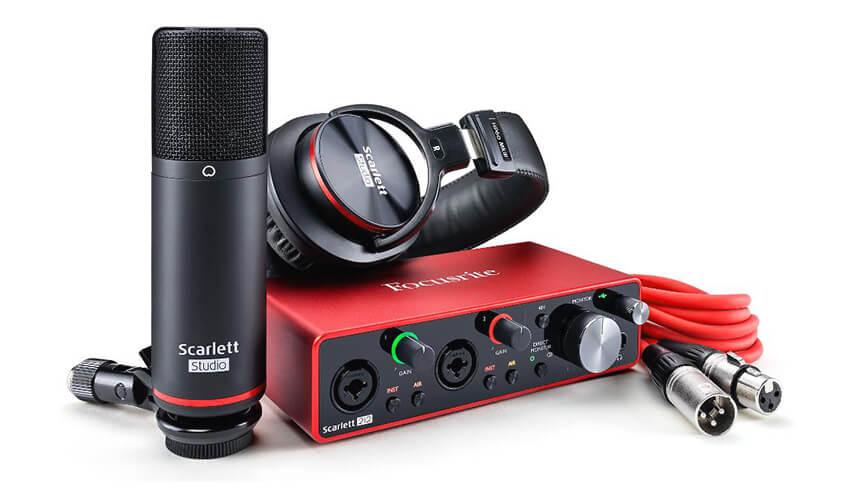
Polar patterns: Cardioid
Recording Sample Rate: 24-bit 192kHz
Connectivity: USB Type-C
Frequency response: 50–20,000Hz
Features: Scarlett CM25 MkIII Microphone, Scarlett Solo 3rd Gen interface,Scarlett HP60 MkIII
If you’re looking for an affordable way to start recording high-quality audio, the Scarlett Solo Studio 3rd Gen is a great option. It includes: Scarlett 2i2 3rd Gen Interface, a CM25 MkIII condenser mic, HP60 MkIII closed-back headphones, one XLR cable, and a Type-C to Type-A USB cable. So everything you need included, it’s perfect for podcasting or streaming.
The Solo Studio is a great choice for an XLR mic, as it provides high-quality sound and doesn’t break the bank. At just $280, it’s a great value for all that you get.
Focusrite is a well-respected brand in professional audio, with a legacy of quality products. I have experienced their products in the past and found them to be simple to operate but also technically effective for high-grade audio production. Their products are designed with the user in mind, making them easy to use while still providing the power and flexibility needed for professional-level audio production. Focusrite is a brand that I trust and would recommend to anyone looking for quality audio products.
The 2i2 interface is brighter, cleaner, and more easily navigated than previous models. It now runs entirely on a single USB Type-C to Type-A cable, even power.
If you’re looking for an easy way to start podcasting, the 2i2 is a great option. This twin-preamp design allows you to run two microphones through the single interface, making it a convenient option for recording multiple people at once. Each input offers individual gain control, which can be helpful if you have a loud friend or colleague on the other end of the mic, but it’s also great if you want to use one input for an instrument and the other for your voice. The INST switch can be used to tweak a few key specs when working with instruments, while the AIR switch may be of greater interest to streamers and podcasters.
The AIR switch on the Focusrite Clarett 2Pre USB interface helps to bolster the high frequencies, providing a more accurate recreation of the ISA 110 mic preamp found on the Studio Console. This can be helpful for vocals, providing a bit of extra clarity and “pop.”
The CM25 MkIII is an excellent condenser microphone for the price. It’s solidly built, with a balanced, crisp sound that can be captured from up to a few feet away. If you’re looking for a great USB microphone that doesn’t cost a lot, the CM25 MkIII is definitely worth considering.
The 2i2’s twin-preamp design is a welcome addition for anyone looking to plug in more than one USB mic into their PC. It was always a problem for anyone who tried to do so, but with the 2i2, that’s no longer an issue. Not only does the twin-preamp design make it possible to run two microphones through a single interface, but it also provides some great value for the price. We love everything about the 2i2, from its compact size to its exceptional sound quality. If you’re in the market for a new USB audio interface, the 2i2 should be at the top of your list.
How do microphones work?
To choose the right microphone for your needs, you first need to understand how they work. Sound waves generated by a vocalist, an acoustic guitar, a flute, a pregnant elephant or whatever else you’re trying to record will hit a flexible diaphragm inside your microphone. As the diaphragm moves it generates an electrical signal that travels down a cable to your amplifier, desk or recording interface. Most of this signal will then end up at a studio monitor or pair of studio headphones, where it causes a speaker cone to fluctuate. These movements cause the air pressure to change, generating sound waves that match your original source. Although it still seems like magic to us, thankfully it’s not quite as complicated as it seems!
Sound is created by vibrations in the air, which can be captured by a microphone. The microphone converts the sound into an electrical signal, which is sent to a speaker. The speaker converts the electrical signal back into sound, which we hear.
So, in a way, the microphone and speaker work in a very similar way. The mic’s diaphragm and the speaker’s cone are both converting sound into an electrical signal, and then back again. But of course, there’s a bit more to it than that!
There are two main types of microphone diaphragms: dynamic and condenser. Each type has its own unique properties that can affect the sound quality of your recordings.
Dynamic microphones are popular because they are relatively durable and can handle high sound pressure levels. They also tend to be less sensitive to environmental noise, making them ideal for use in noisy environments. However, they typically produce a lower-quality sound than condenser microphones.
Condenser microphones are more sensitive to environmental noise but also produce a higher-quality sound. They are also more fragile than dynamic microphones and require phantom power to function properly.
Dynamic vs condenser
The dynamic microphone is a very simple device. It consists of a coiled wire that is placed in a magnetic field, with a diaphragm attached to the back. When sound waves hit the diaphragm, it causes it to flex, which in turn moves the coil. This movement generates an electrical signal that can be converted into sound. Dynamic microphones are not as sensitive as other types of microphones, but they are very durable and can handle high sound levels without distorting the audio.
Dynamic mics are great for live use because they have a no-nonsense build that means there is little that can go wrong. They also have a robust diaphragm to support the coil, and they are passive devices, which means they don’t need phantom power in order to operate. Additionally, dynamic microphones are passive devices, which means they do not require phantom power to operate – making them a great option for live performances.
The diaphragm on dynamic mics is much thicker than on condenser mics, which results in a limited frequency response. However, this can be seen as a positive trait for live use, as it means that the mic is less sensitive to background noise and handling noise. Additionally, dynamic mics are well-suited for miking loud sound sources, which could damage a condenser mic.
Condenser microphones are more sensitive than dynamic microphones and they also require more complex circuitry to function. This is because condenser microphones rely on capacitance to generate an electrical signal. In order to create a signal, two conducting plates are needed – a diaphragm and a rigid backplate. The distance between these two plates alters as the diaphragm moves, which in turn causes a variance in electrical charge (or capacitance). This is what creates the microphone’s signal.
Condensers are perfect for reproducing sounds faithfully due to their wide frequency response and ability to pick up delicate sounds. They are often used to mic acoustic guitars, hi-hats, and vocals.
Condenser mics are more expensive than dynamic mics, but they typically have higher output levels and require less gain at the preamplifier to generate a decent signal. They’re also better suited to life in a warm, dry studio than in a damp, outdoor environment. However, they need phantom power in order to operate.
Large diaphragm condensers are often praised for their ability to warm up vocals, lending them a more pleasing sound. In contrast, small diaphragm condensers are known for their transparency, making them the ideal choice for instruments that need to sound as natural as possible, like strings and hi-hats.
There is no definitive answer as to which type of mic is better, as each has its own unique strengths and weaknesses. However, dynamic mics are often better suited for some applications, while condenser mics are more commonly used for others. Every mic model has a unique frequency response curve, which can affect the sound source in different ways. By understanding the characteristics of different mics, you can use them to your advantage in order to create the best recordings possible.
Understanding polar patterns
Microphones have different polar patterns that determine how they capture sound. This can be very useful when you need to include or exclude certain sounds. It also affects the tone of the microphone, so you can experiment with different mics to find what works best for your needs.
An omnidirectional mic is a great choice for vocals because it picks up sound from all directions, providing a gorgeous bass response. However, it is susceptible to room noise and prone to feedback, which makes it a poor option for live use. Cardioid microphones are designed to be sensitive to sounds in front of the mic, and capture very little from the rear. This makes them popular for semi-isolating vocals or other sound sources, both on stage and in the studio. They are susceptible to the proximity effect, which is a boost in bass frequencies as the mic is brought closer to the action. This can be desirable depending on the result you are trying to achieve, but it can also make some instruments sound muddy. The proximity effect can make radios DJs and voice-over artists sound smoother, but it can also make some instruments sound muddy.
The supercardioid and hypercardioid patterns of microphones make them perfect for isolating vocals on stage, as they have increasingly narrower pickup areas. This ensures that the talent doesn’t move outside of the pickup area and that the proximity effect is even more evident. However, feedback risk is almost non-existent with these types of microphones.
What do the different audio patterns mean?
There are several different microphone patterns, each of which has its own benefits and drawbacks. The four most common patterns are bidirectional, cardioid, omnidirectional, and stereo.
Bidirectional microphone pick up sound from both the front and the back of the mic, making them ideal for interviews or recording two people talking to each other. They tend to pick up less background noise than other patterns, but they can also be more sensitive to wind noise.
Cardioid microphones are shaped like a heart, hence the name. They pick up sound mainly from the front of the mic, making them ideal for recording solo singers or instruments. They reject sound from the sides and rear of the mic, which can help reduce background noise. However, they can also be more susceptible to wind noise than other patterns.
Omnidirectional microphones pick up sound equally from all directions, making them ideal for room recordings or capturing a large number of people talking at once. However, they tend to capture more background noise than directional mics.
Stereo microphones capture sound in two channels, allowing you to create a more realistic three-dimensional audio recording. However, they tend to be less sensitive than other patterns and can pick up more background noise.
USB vs XLR connections
USB is a very common connector, found on many devices. It’s convenient and easy to use, but XLR connectors are the choice for professional audio equipment. They offer better noise protection and can carry more power. They’re also built to take a lot of abuse. So while USB is a good option, an XLR mic is the best choice for pro audio equipment.
How much should I spend on a recording microphone?
Dynamic microphones can be a more affordable option than condenser microphones, and they can provide better sound quality for certain applications, such as live performances. If you are on a budget, then it may be wiser to invest in a high-quality dynamic mic, such as the Sontronics Solo, rather than a low-cost condenser microphone. There is no reason why you cannot use a good dynamic mic in the studio.
If you’re working out of a home studio, it may be better to spend your hard-earned cash on sound treatments and training rather than lusting after a famous mic. The law of diminishing returns means that you’ll need a really good studio space in which to hear the subtle difference between a good condenser and a really good condenser. In most cases, something like an Aston Origin (which costs around $299/£199/€299) is not that far behind in terms of recording quality. So, if you’re trying to save money, it’s probably wiser to invest in things that will make a bigger difference in the overall sound of your recordings.
How to choose the best microphone for you
When looking for a microphone, there are a few things you need to take into account. What do you need it for? Podcasting? Recording music? General use? Depending on your needs, you will want to look for different types of microphones.
Most all-purpose mics are relatively cheap and can be used for a variety of purposes. However, if you need high-quality recording, you’ll have to pay more for a specialist mic. So determine what your needs are and find the right mic for you.
Keep in mind that cheaper mics are often more generalized while more expensive ones tend to be more specialized. This doesn’t mean that the cheaper option is always worse. It just means that you get what you pay for. If you want a semi-professional quality recording, you’ll have to pay semi-professional prices.
When looking for a microphone, it’s important to consider what you’ll be using it for. Each mic is optimized for a specific use, so make sure to do your research before making a purchase.
The official websites for each microphone will usually give you a good idea as to whether the mic is good for podcasting, gaming, music, or some other application. If you’re not sure, remember that cardioid microphones are generally the most useful for home recording applications. Other patterns may be better suited for use in professional or live settings.


